When you picture a geisha, what comes to mind? For most, it's an iconic image: a flawless white face, striking red lips, and dark, expressive eyes. This look is one of the most powerful symbols of Japanese culture, but it's so much more than just cosmetics. It’s a living canvas, a form of high art steeped in centuries of meaning, tradition, and artistry.
The history of geisha makeup is a captivating story of symbolism, social status, and a remarkable evolution in beauty.
The Enduring Allure of Geisha Makeup
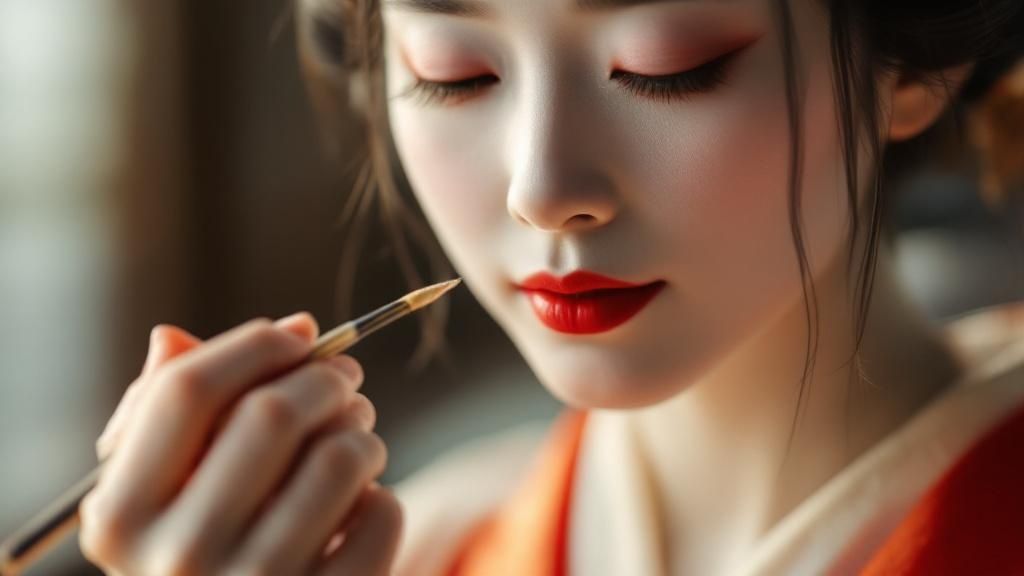
The mesmerizing aesthetic of geisha makeup has fascinated people around the world for generations. The look is designed to transform the face into a mask of idealized beauty, crafted to stand out in the soft, flickering candlelight of traditional Japanese tea houses and banquet rooms. But this isn't just about applying paint; it’s a meticulously crafted illusion that tells a deep and nuanced story.
Don't think of it as hiding the person underneath. Think of it as creating a character.
Every single element is chosen with purpose and applied with immense skill, part of a ritual that turns the wearer into a living, breathing work of art. The goal is to create an air of mystery and perfection, drawing an observer's attention away from the individual and toward the geisha's graceful movements and artistic talents.
A Language of Art and Status
The history of geisha makeup is really a journey through Japan's changing ideals of beauty and social customs. It's a visual language that communicates subtle, yet incredibly important, details about the woman wearing it. This intricate art form reveals:
- Experience and Rank: You can tell whether a woman is an apprentice (maiko) or a fully-fledged geisha (geiko) just by looking at her lips and eyebrows. Subtle differences in application are everything.
- Formality of the Occasion: The intensity and specific style of the makeup will shift depending on the performance, ceremony, or event she is attending.
- Artistic Expression: The face becomes the primary canvas for conveying emotion, grace, and the specific artistic discipline the geisha has mastered.
The geisha’s makeup is not a disguise but a uniform, a symbol of her dedication to a world of art and refinement. It is a commitment to an aesthetic that transcends ordinary beauty standards.
To truly appreciate this tradition, it helps to understand where it came from. The table below provides a quick look at the key periods that shaped the art form we see today.
Key Eras in the History of Geisha Makeup
This table offers a quick overview of the major historical periods that defined the evolution of geisha makeup and their most significant contributions.
| Historical Period | Key Developments and Significance |
|---|---|
| Heian Period | The courtly origins of white face paint (oshiroi) began, influenced by Chinese fashion. A pale complexion was a sign of nobility. |
| Edo Period | The rise of the geisha profession. Makeup became more refined, with codified rules for maiko and geiko. The iconic "three colors"—white, red, and black—were established. |
| Meiji and Taisho Periods | Western cosmetics began to influence Japan, but traditional geisha makeup was preserved as a mark of cultural heritage and artistic discipline. |
| Modern Era | While traditional ingredients have been replaced with safer, modern alternatives, the application techniques and symbolism remain deeply rooted in historical practice. |
Each of these eras added another layer to the story.
In this guide, we'll dive deep into the fascinating origins of this tradition, decoding the symbolic meanings behind each color and technique. We will trace its journey from the ancient courts of Japan to its undeniable influence on today’s global beauty trends, uncovering the rich history behind one of the world's most recognizable faces.
Crafting the Canvas in the Heian and Edo Periods
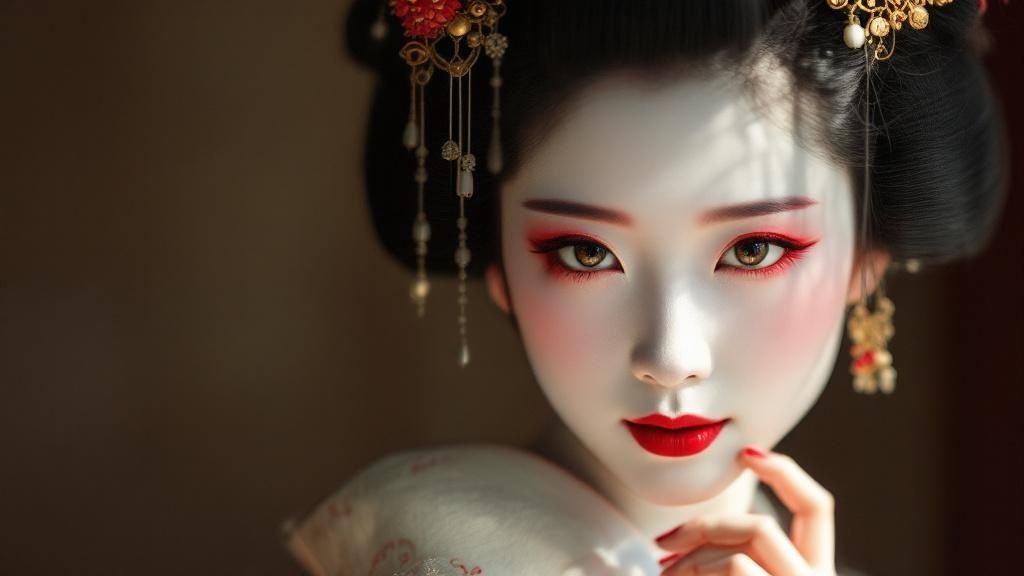
The striking white foundation that defines the geisha’s look is so much more than simple face paint. Its story stretches back centuries, long before the first geisha even appeared. To really get it, we need to travel back to the Heian period (794-1186), an era obsessed with courtly elegance and aristocratic status.
During this time, a powdered white face became the ultimate symbol of beauty and high birth. Drawing heavily on trends from China, Japanese court ladies would paint their faces with a thick, white powder called oshiroi. A pale complexion was everything—it telegraphed a life of leisure, one spent indoors away from the sun and the toil of manual labor.
This wasn’t just about looking pretty; it was about creating a stark, almost ethereal beauty. The history of geisha makeup truly begins here, with this established ideal of a flawless, porcelain face that would be preserved and perfected for generations.
The Rise of a Practical Art Form
As Japan moved into the Edo period (1603-1868), the geisha profession began to blossom in the vibrant entertainment districts known as the 'flower and willow world.' It was here that oshiroi transformed from a simple status symbol into an essential tool of the trade.
Just imagine the performance spaces back then. Tea houses and banquet halls weren't lit by bright, electric lights but by the soft, flickering glow of candles. In that dim, moody environment, a performer’s subtle facial expressions would be completely lost in the shadows.
The stark white oshiroi became an ingenious, practical solution. It turned the geisha’s face into a bright, reflective canvas, making sure her every smile, glance, and nuanced expression was perfectly visible to her audience.
The white foundation acted like a spotlight for the face, magnifying the geisha's artistry and allowing her to communicate effectively in low-light settings. It was a functional necessity as much as a stylistic choice.
This is where you see the true mastery of the history of geisha makeup take shape. Applying oshiroi was anything but simple; it was a ritual demanding immense skill, patience, and an artist's touch.
The Meticulous Art of Oshiroi Application
Creating that perfect canvas was a multi-step process that started long before any color was ever applied. The preparation alone was a testament to the discipline and dedication at the heart of a geisha's life.
First, a special wax or oil base, known as bintsuke-abura, was worked into the skin. This substance was critical for two main reasons:
- Adhesion: It gave the oshiroi powder something to grip onto, helping it apply smoothly and preventing it from cracking or flaking during a long evening of entertaining.
- Skin Protection: It formed a crucial barrier between the skin and the makeup, which was vital for keeping the complexion healthy under all those heavy layers.
The care taken with this base layer really highlights the deep, timeless connection between beauty rituals and proper skincare. To get a flawless finish with any foundation, modern or traditional, the skin underneath has to be well-prepared. To dive deeper into this idea, check out our guide to master Japanese skincare steps for your most radiant skin.
After the base was applied, the oshiroi powder was mixed with water to create a paste. Using flat brushes, this paste was then carefully painted onto the face, neck, and chest. The goal was always a perfectly even, opaque finish without a single streak.
This demanding application required incredible precision, especially around the hairline. An artist needed to create a soft, natural-looking edge to avoid a harsh, mask-like appearance. For any apprentice, mastering this process was a foundational skill, marking the very first step in her physical transformation into an artist.
Decoding the Symbolic Palette of Red and Black
Once the flawless white canvas of oshiroi was set, the real artistry in geisha makeup could begin. This wasn't about a rainbow of colors; it was about the profound power of just two: a vibrant red and a dramatic black. This limitation wasn't for a lack of options—it was a highly intentional choice.
Think of it as a visual language. Each color and every line was a carefully chosen word, turning the face into a masterpiece of silent expression. This distinct trio of white, red, and black became the recognized standard during Japan's Edo period (1603-1868), establishing an aesthetic that’s still iconic today. Red, used for lip rouge (beni), was central, symbolizing life and youth. Black defined the eyebrows and was used for the historical tooth-blackening practice of ohaguro.
The real magic was in the contrast. Against that pure, almost mask-like white, every flick of black and every touch of red was amplified, carrying layers of meaning that could communicate everything from a geisha's mood to her social standing.
The Passion and Allure of Red
Red, or beni, was arguably the most expressive color in the entire kit. Traditionally, it was painstakingly derived from the petals of the safflower (benibana), making the pigment incredibly precious. It was the color of life itself—of passion, energy, and youthful allure. Its application was a delicate art, used to draw the eye and create stunning focal points.
The most obvious use, of course, was on the lips. A geisha’s lips were never fully colored in the way we apply modern lipstick. Instead, the beni was used to paint a smaller, bud-like shape, which created the illusion of a delicate, unopened flower. This technique, called sasabeni, was meant to make the mouth appear smaller and more doll-like, a key beauty ideal of that era.
The way red was applied was a direct signal of status and experience. An apprentice (maiko) might only have her lower lip painted red—a beautiful symbol of her youth and innocence. A senior geisha (geiko), on the other hand, would have both lips painted, signifying her maturity and mastery of her art.
Red also appeared in other subtle but crucial places. A delicate touch was often swept into the outer corners of the eyes and sometimes even faintly on the earlobes. These tiny hints of color added a flush of vitality and a touch of sensuality, suggesting warmth and emotion just beneath the serene white canvas.
The Drama and Definition of Black
If red was the color of passion, black was the color of drama, definition, and character. It provided the sharp, graphic lines that gave the geisha’s face its iconic structure and emotional weight.
The eyebrows were a primary focus for the black pigment. They were often drawn much higher on the forehead than where they naturally sit, creating an expression of serene openness. To achieve this perfect, stylized arch, a geisha might even have her natural eyebrows shaved. The shape and thickness could also be varied to subtly communicate different moods or character types for a performance.
Black was also absolutely essential for defining the eyes. Using a fine brush, a sharp, crisp line was drawn along the upper lash line, often extending into a graceful upward flick. This not only made the eyes appear larger and more expressive but also added an immediate touch of elegance and sophistication. For special occasions, red pigment would be applied around the black liner, creating an even more striking and dramatic effect.
This traditional focus on creating radiant looks through specific color choices and techniques is still a cornerstone of J-beauty today. You can see echoes of these classic ideas in many of the top Japanese beauty trends for radiant skin and unique looks. Together, red and black were what brought the oshiroi canvas to life, turning a face into a powerful and dynamic medium for storytelling.
How Makeup Reveals a Geisha's Status
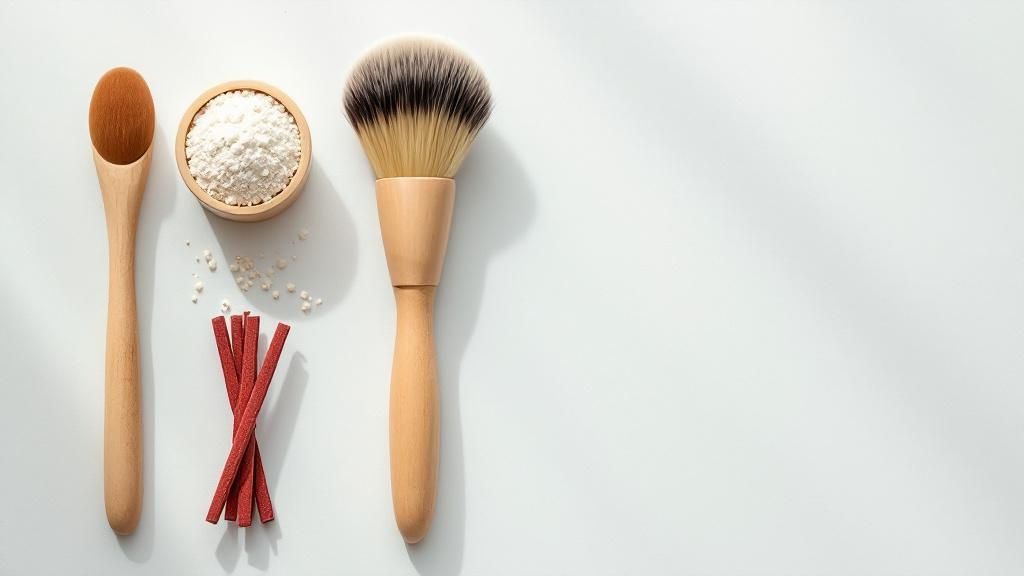
In the highly structured "flower and willow world," a geisha’s makeup is so much more than simple adornment. It’s a silent, sophisticated language that instantly communicates her rank, her experience, and where she is on her artistic journey. To an untrained eye, the look might seem uniform, but for those who know what to look for, every tiny detail tells a story.
Think of it like a military uniform, where specific badges and insignia denote rank and accomplishments. In the same way, the makeup of an apprentice, known as a maiko, is deliberately and visibly different from that of a full-fledged geisha, or geiko. These visual cues are crucial within their community, allowing for immediate recognition of status and seniority.
The Youthful Brilliance of a Maiko
A maiko’s makeup is intentionally designed to emphasize her youth and inexperience. It’s brighter, more colorful, and purposefully "incomplete" to show that she is still in training. One of the most telling signs is her lipstick, or beni.
A first-year maiko will only have her lower lip painted a vibrant red. This creates an image of innocence and deference—a visual cue that she is still learning and finding her voice in the arts. As she gains more experience, she might graduate to painting a thin line on her upper lip, but never both lips fully.
Her eye makeup is also distinct, often accented with red pigment around the corners of the black liner. Her blush is applied more vibrantly as well. This isn't just a style choice; it’s packed with symbolism. The brighter reds and pinks all point to her apprenticeship status. In some historical periods, a now-rare practice of tooth-blackening, or ohaguro, was also part of this stage, reflecting an older beauty trend among aristocratic women.
The Understated Elegance of a Geiko
When a maiko finally graduates to become a geiko, her makeup undergoes a significant transformation. The change signals a shift from youthful exuberance to mature, understated elegance. Her artistry is now the main attraction, so her appearance becomes more subdued and refined.
A senior geisha will paint both her upper and lower lips fully red, a clear and confident sign of her professional status. The vibrant blush of her maiko days is toned down, and her eye makeup becomes simpler and more sophisticated, focusing on sharp black lines with far less red accentuation.
Even her foundation application changes. After a certain age or for less formal gatherings, a geiko might stop wearing the heavy white oshiroi altogether, opting for more conventional makeup. This transition is a powerful statement that her reputation now rests on her artistic skill, not her youthful appearance.
Maiko vs Geiko: A Visual Guide to Makeup Differences
To really appreciate the storytelling in geisha makeup, it helps to see the differences side-by-side. This table breaks down the key features that distinguish a maiko from a geiko and the symbolism behind each variation.
| Makeup Feature | Maiko (Apprentice) | Geiko (Senior Geisha) |
|---|---|---|
| Lips (Beni) | Only the lower lip (or a thin line on the upper) is painted red to signify youth. | Both lips are fully painted to show maturity and mastery. |
| Eyebrows | Natural brows are shaped with red and pink undertones, appearing softer. | Brows are sharply defined with black, appearing more sophisticated. |
| Eyes | Makeup is more colorful, often with significant red pigment around the black liner. | Makeup is more subdued, using primarily black liner for a sharp, elegant look. |
| Foundation | Wears the full white oshiroi for nearly all public appearances. | Wears oshiroi for formal events but may use conventional makeup for others. |
Learning these distinctions is the key to unlocking the deep narrative woven into the geisha aesthetic. For those of you inspired to try a modern interpretation, our Japanese makeup tutorial reveals secrets to effortless J-beauty.
The Evolution From Toxic Lead To Modern Cosmetics
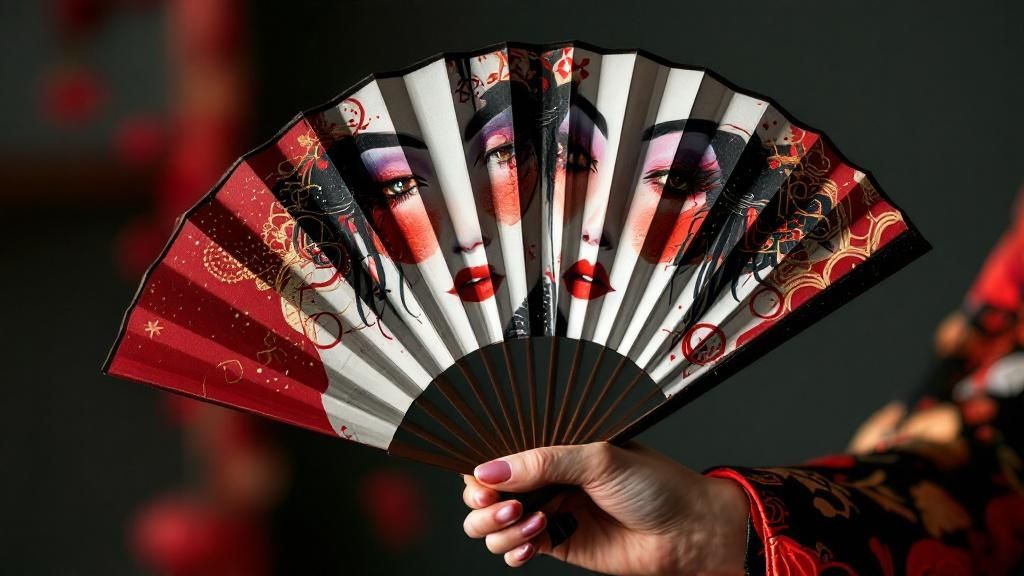
That striking white canvas of a geisha's face is the absolute foundation of her iconic look. But the story behind the ingredients used to create it has a dark and dangerous past. For centuries, the go-to substance for oshiroi was, shockingly, white lead powder.
While lead produced that coveted smooth, opaque finish, this choice came at a devastating cost. This wasn't just a Japanese practice; lead-based cosmetics were used across many cultures, prized for their coverage. In Japan, geisha and kabuki actors who relied on oshiroi daily suffered terribly from chronic lead poisoning, leading to skin lesions, organ damage, and other horrific health issues.
It's a tragic irony, isn't it? The very material used to craft an image of idealized beauty was slowly destroying the health and skin of the women who wore it. For a long time, the pursuit of that perfect, pale complexion was a dangerous commitment with few alternatives.
The Rise of Safer Alternatives
The real turning point came during Japan's Meiji period (1868-1912), an era of incredible change and modernization. As Western science and medicine began to take hold, public awareness about the dangers of lead poisoning finally started to grow. This shift in thinking sparked a critical search for safer ingredients.
Innovators began experimenting with non-toxic powders, turning to things like rice and corn starch. These natural materials could provide a similar white finish without the awful side effects, marking a huge leap forward in the history of geisha makeup.
This wasn't just a simple change in formula; it was a fundamental shift in mindset. It signaled a growing understanding that preserving the art form couldn't come at the expense of the artists themselves. The health and safety of the geisha finally became a priority.
This period also witnessed the birth of Japan's modern cosmetics industry. As concerns about lead grew, pioneering companies began marketing safer, Western-style products. In 1872, the company now known as Shiseido was established, introducing innovative pharmaceutical cosmetics that gradually began to replace the old, harmful traditions.
Modern Formulas With Traditional Roots
Fast forward to today, and the oshiroi used by geisha is a world away from its toxic predecessor. Modern products are a sophisticated blend of tradition and scientific innovation, designed to be both stunningly effective and completely safe for the skin.
Contemporary formulas often use a base of fine powders like titanium dioxide and zinc oxide—the very same ingredients you'll find in modern sunscreens and foundations.
These ingredients offer some key advantages:
- Safety: They are completely non-toxic and gentle on the skin, even with daily use.
- Performance: They give you that excellent, smooth coverage and a long-lasting finish that holds up through hours of performing.
- Consistency: They mix beautifully into the perfect paste-like texture needed for that flawless application.
This evolution goes beyond just the white foundation. The vibrant red for the lips (beni) and the sharp black for the eyes are now created from high-quality, skin-safe pigments. It's all about ensuring that every part of the modern geisha's look upholds the ancient aesthetic without ever compromising her well-being.
The journey of geisha makeup from deadly lead to safe, sophisticated cosmetics is a powerful story of adaptation. It shows how a timeless art form embraced innovation to protect its practitioners, ensuring its legacy could continue for generations to come. If you're curious about how these principles of quality and performance have influenced today's products, you might enjoy our guide to the best Japanese makeup foundation.
The Geisha's Lasting Legacy in Modern Beauty
When you picture a geisha, with her iconic white foundation and crimson lips, you might think of it as a beautiful relic from a bygone era. But the truth is, the philosophy behind this ancient art form is very much alive, its echoes found in modern beauty aisles and on high-fashion runways all over the world. The history of geisha makeup isn’t a closed book; it's a living source of inspiration that continues to shape how we think about beauty today.
Far from being a historical footnote, the geisha's aesthetic is a masterclass in concepts that today's brands and makeup artists are constantly revisiting. The core ideas—meticulous artistry, dramatic contrast, and symbolic color—have been brilliantly reinterpreted for a new audience, proving just how timeless the original vision really is.
You can draw a direct line from the geisha’s makeup kit to some of the most popular beauty trends we see now. The techniques and ideals perfected centuries ago in the dimly lit teahouses of Kyoto are, surprisingly, more relevant than ever.
The Modern Quest for a Flawless Canvas
The geisha’s absolute dedication to creating a perfect, porcelain-like canvas with oshiroi is the direct ancestor of our modern obsession with flawless skin. Today, the goal isn't a stark white mask, of course. But the principle underneath is identical: achieving a smooth, even-toned complexion that acts as the perfect base for any color you add on top.
The entire modern beauty industry is practically built on this very foundation. Just think about the explosion of products like:
- Full-coverage foundations that promise to erase every imperfection and create a perfectly uniform skin tone.
- Color-correcting primers designed to neutralize redness and dark spots before foundation is even in the picture.
- Finishing powders that set makeup in place and give you that airbrushed, poreless finish.
Each of these serves the same fundamental purpose as the traditional bintsuke-abura wax and oshiroi powder—to create an idealized version of skin. The meticulous preparation and application mirror the ritualistic approach of the geisha, where the canvas is just as important as the art painted upon it. This deep-rooted appreciation for skincare as the true first step to beauty is one of the many Japanese beauty secrets that have earned worldwide acclaim.
The geisha’s canvas was never about hiding; it was about perfecting. This philosophy lives on in every single product that promises a "filter-like" finish, proving a shared goal across centuries: creating a beautiful, flawless base.
The Timeless Power of a Red Lip and Winged Eye
Beyond the flawless skin, the geisha's tightly focused color palette of red and black has left an undeniable and lasting mark. A bold, precisely painted red lip and sharp, graphic black eyeliner are two of the most enduring looks in the entire history of cosmetics, and both have deep roots in geisha tradition.
The geisha's beni lip, often painted smaller than the natural lip line to look like a delicate flower bud, showed the incredible power of a concentrated, vibrant red against a pale background. Fast forward to today, and a classic red lip is still the ultimate symbol of confidence and glamour. From Old Hollywood starlets to modern-day CEOs, it’s a look that commands attention.
In the same way, the sharp, winged eyeliner used to define a geisha's eyes is the direct ancestor of the modern cat-eye. This technique, designed to elongate the eye and add a touch of drama, is a staple for makeup artists and beauty lovers everywhere. It’s a testament to the fact that a few simple, well-placed lines can create a look of timeless elegance. From Dior's runway shows to celebrity red carpets, the influence of this dramatic yet simple aesthetic is everywhere, proving that the geisha's legacy isn't just history—it's beauty in motion.
Frequently Asked Questions About Geisha Makeup
When you first dive into the beautiful world of geisha makeup, it’s natural to have a few questions. The art form is so rich and detailed that understanding the practical side of things gives you a much deeper appreciation for the skill and sheer dedication involved. Let’s tackle some of the most common questions.
The whole process is a quiet, focused ritual. It's not just about getting ready for an evening of performance; it's a testament to the idea that the transformation itself is part of the art.
How Long Does Geisha Makeup Application Take?
Applying full, traditional geisha makeup is an incredibly meticulous process. It’s a true test of patience and precision. For a maiko or geiko, the entire ritual can take anywhere from 45 minutes to over an hour to complete.
It all starts with warming and applying a wax base called bintsuke-abura. Next, she carefully mixes the white oshiroi paste before painting it onto her face, neck, and chest. Finally, she defines her eyes and brows and, with a steady hand, paints her lips with the vibrant red beni.
The time commitment really drives home how central the makeup is to a geisha's artistic identity. This isn't a quick touch-up; it's the foundational act that transforms her into a living work of art.
What Is the Meaning of the Unpainted Skin on a Geisha's Neck?
That unpainted "V" or "W" shape you see on the nape of the neck is one of the most fascinating and alluring details of the entire look. Known as eri-ashi, this element is brimming with cultural meaning.
In traditional Japanese aesthetics, the nape of the neck was considered a highly sensual and attractive area. By leaving two or three stripes of natural skin showing, it creates a tantalizing hint of the real person beneath the mask of oshiroi. The shape also cleverly creates the illusion of a longer, more elegant neck.
Do Geisha Wear Full Makeup Every Day?
No, the iconic full white makeup is not an everyday thing. Think of it like a formal gown—it's reserved for official performances, special events, and important appointments where the highest level of tradition is expected.
An apprentice, known as a maiko, wears the full oshiroi much more often as part of her training and public presentation. As a geisha, or geiko, gains experience and seniority, she actually wears the full white makeup less frequently.
For more casual outings, a senior geiko might choose to wear more conventional, modern makeup. This shift is significant. It signals her mature status, where her artistic skill and reputation—not just her appearance—have become the main focus of her identity.
Inspired by the timeless elegance and meticulous care of Japanese beauty traditions? Explore a curated collection of authentic skincare and cosmetics at Buy Me Japan and bring the secrets of J-beauty into your own routine. Find your next favorite product at https://buymejapan.com.
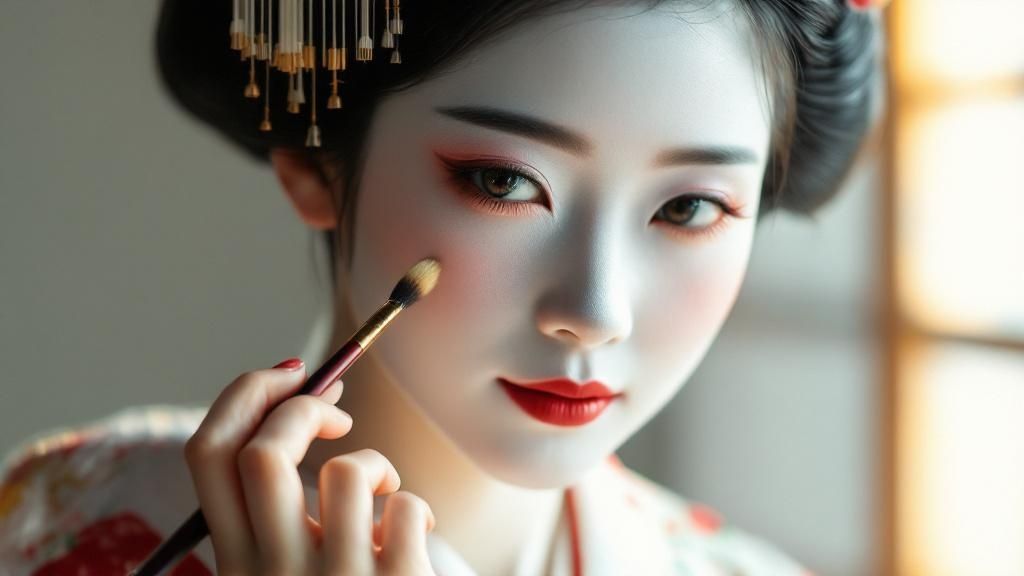
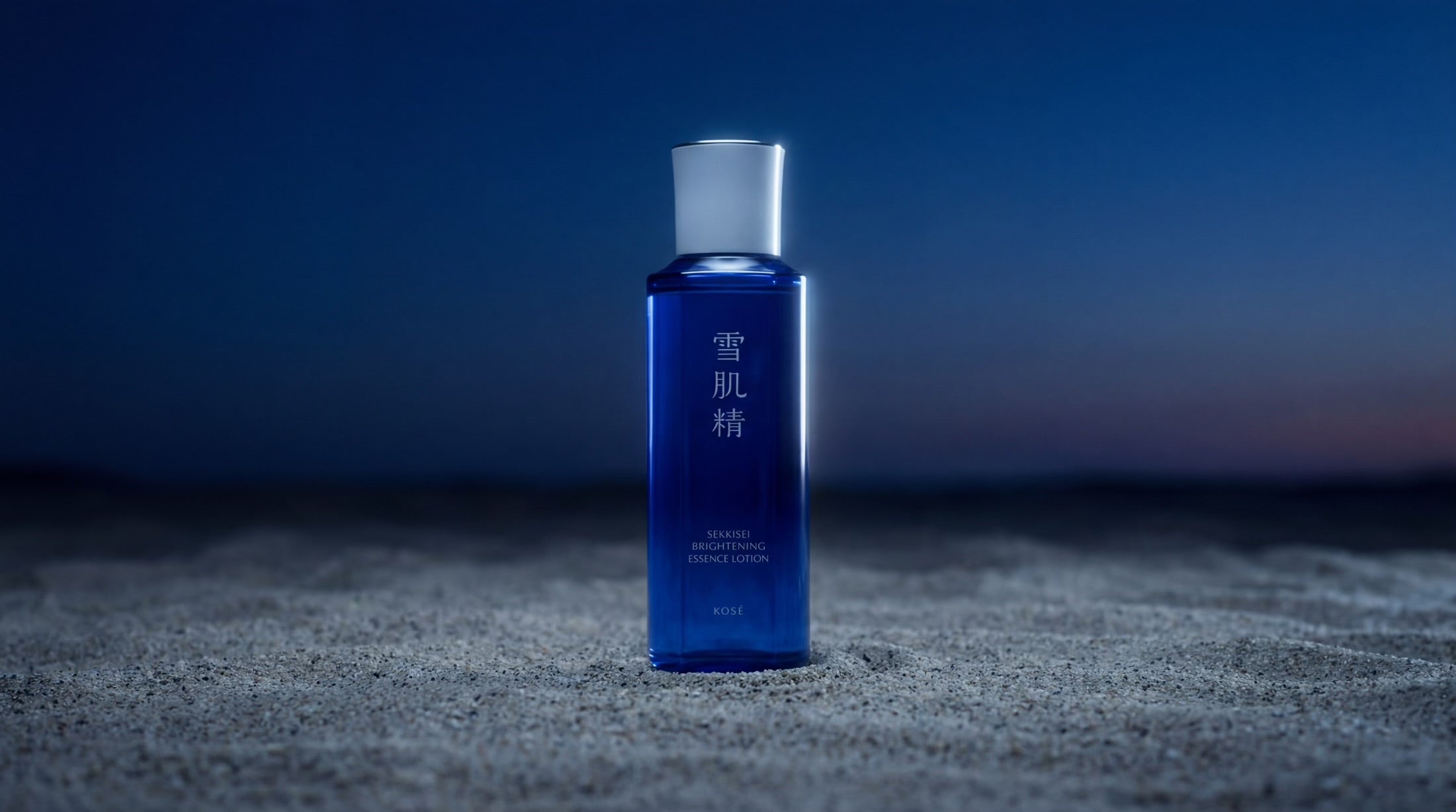
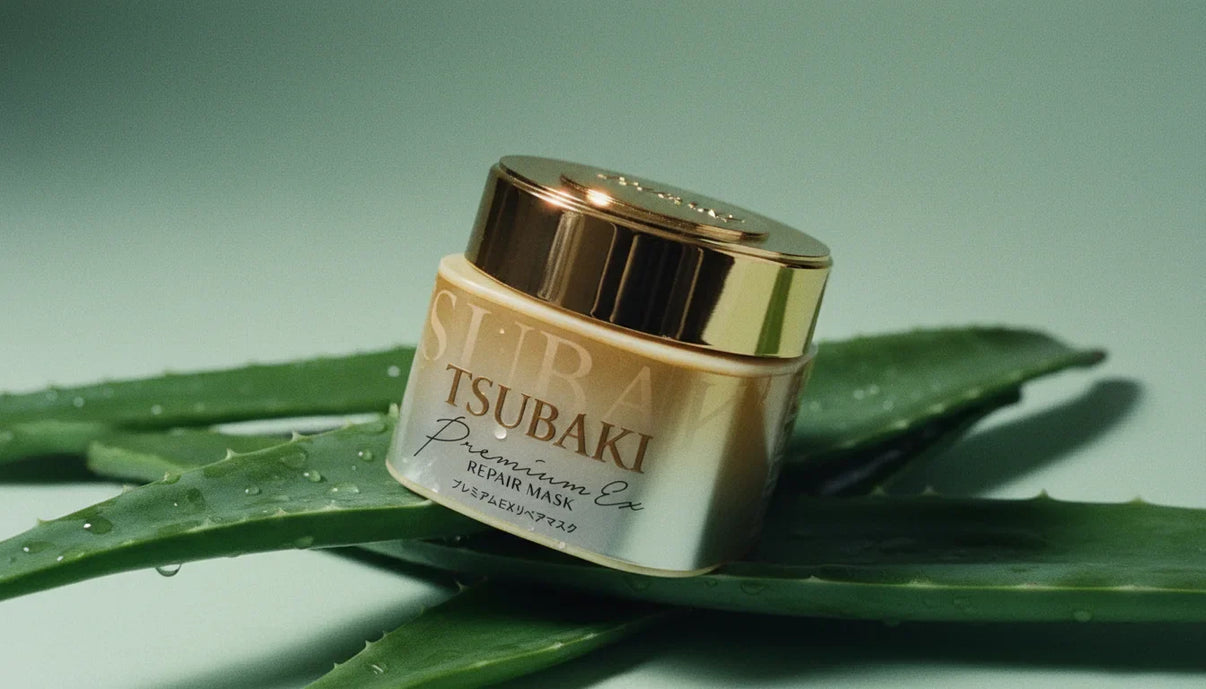
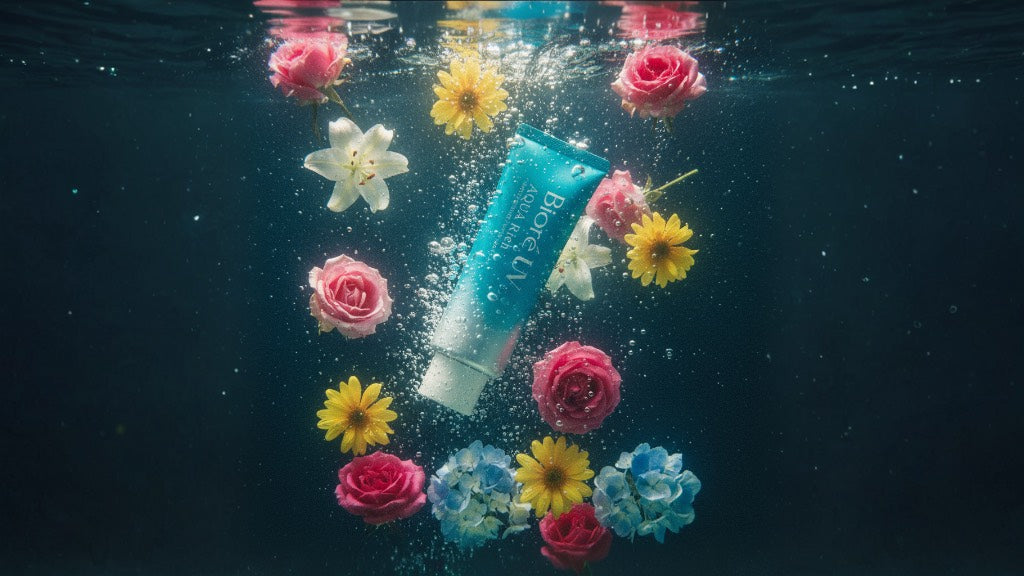
Share:
Your Guide to Japanese Face Massage at Home
The Best Japanese Eye Cream for Ageless Eyes